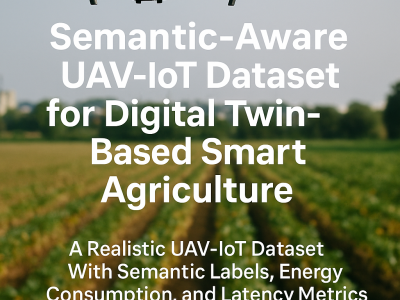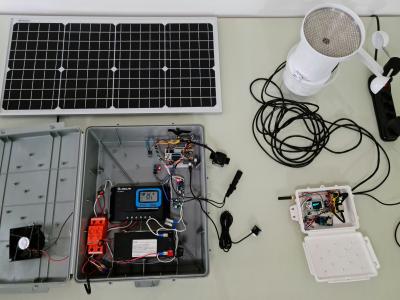Wireless Networking
This dataset contains 60,000 annotated records modeling UAV-based and IoT sensor-driven agriculture environments. Each record includes UAV imaging data (NDVI, NDRE, RGB damage score), IoT sensor values (NPK, pH, moisture, temperature, humidity), semantic labels (NDI, PDI), and metadata for energy consumption, latency, and service migration. It is designed for validating Digital Twin frameworks, semantic communication models, and Federated Deep Reinforcement Learning (FDRL) in precision farming.
- Categories:
 89 Views
89 Views
This dataset provides packet traces captured in a realistic 5G Vehicle-to-Everything (5G-V2X) environment, encompassing both legitimate vehicular communications and Distributed Denial of Service (DDoS) attacks. By deploying four user equipments (UEs) under multiple attacker configurations, the collected captures reflect various DDoS types (TCP SYN, UDP, and mixed) and reveal their impact on 5G-V2X networks. The dataset is further enriched with Argus files and CSV feature tables, facilitating data-driven approaches such as Machine Learning (ML)-based detection agents.
- Categories:
 374 Views
374 ViewsThis file contains the source codes of the proposed end-nodes for a Wireless Sensor Network (WSN) for hydrometeorological monitoring in the article entitled "Hydrometeorological Monitoring using Wireless Sensor Networks". These codes were developed to perform LoRaWAN communication range tests and to test two distinct sensor nodes with different functionalities: a meteorological sensor node and a hydrological sensor node.
- Categories:
 77 Views
77 Views
In recent years, with the rapid development of Internet of Things technology, the application and popularization of intelligent sports equipment in residents’ lives have become extensive. As a sport suitable for all ages, badminton is deeply loved by the masses. This paper designs a smart badminton racket to help students improve their badminton skills by providing real-time training data and three-dimensional posture information.
- Categories:
 26 Views
26 Views
IPv6 Hitlist 1M is an open-source dataset provided by Gasser et al., aimed at creating a comprehensive list of active IPv6 addresses, incorporating results from multiple public address sets and updating daily. We selected the probing results from May 4, 2024, to May 10, 2024. This dataset contains a total of 24.5 million addresses, from which we selected the top 1 million addresses as IPv6 Hitlist 1M.
- Categories:
 14 Views
14 Views
IPv6 Hitlist 1M is an open-source dataset provided by Gasser et al., aimed at creating a comprehensive list of active IPv6 addresses, incorporating results from multiple public address sets and updating daily. We selected the probing results from May 4, 2024, to May 10, 2024. This dataset contains a total of 24.5 million addresses, from which we selected the top 1 million addresses as IPv6 Hitlist 1M.
- Categories:
 10 Views
10 Views
The Smart Home Device Dataset consists of 5000 samples collected at an hourly interval starting from January 2022, representing consumer electronics and IoT-enabled devices in a home automation environment. Each entry is associated with a unique device ID, ensuring identification of distinct devices. The dataset captures real-time sensor readings, including temperature variations (18°C to 30°C), power consumption levels (10W to 500W), and user activity states (Active, Idle, or Sleep), which provide contextual insights into device operation.
- Categories:
 353 Views
353 Views
Recently, large-scale and mega low earth orbit (LEO) constellations have become the primary development trends in satellite networks.Considering the complex topology and limited processing capabilities of LEO satellites, traditional distributed routing algorithms with significant flooding overhead are not suitable for the era of mega constellations. In this context, centralized routing technology based on Software Defined Network (SDN) architecture has been widely applied.
- Categories:
 57 Views
57 Views
An In-depth Analysis of Thermal Management Systems for Wireless Charging in Electric Vehicles
1. Introduction
Wireless charging technology is revolutionizing electric vehicles (EVs) by offering a convenient alternative to traditional charging. This technology enhances user experience and supports the growth of autonomous EV fleets. As electrification of transportation accelerates, effective thermal management becomes crucial to address heat generation during inductive power transfer, ensuring system reliability and longevity.
- Categories:
 139 Views
139 Views

